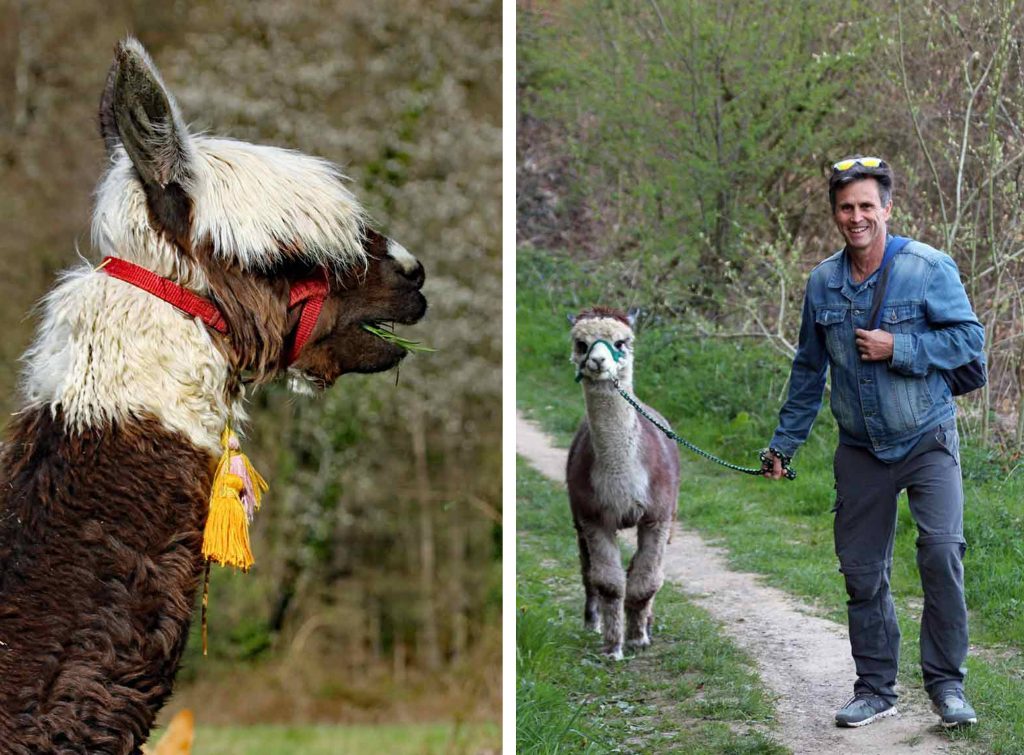
The Bergisches Land region offers verdant green hills, forested mountainsides, plenty of dams and glistening streams and rivers. The area, which is close to the cities Cologne, Düsseldorf, Wuppertal and Remscheid invites you to diverse nature experiences. A very special experience for the whole family is hiking with the curious but shy alpacas. Alpaca hikes can be done in small groups for two to three hours through woods and meadow. Thereby, you get in contact with the animals and learn about their characteristics.
The alpaca
The alpaca is a 6.000 years old camel type that originates from the South American Andes. They are closely related to lamas. Like all camels, alpacas are social herd animals, which feel the most comfortable in groups. They are modest herbivores and mostly eat grass. The alpaca is widespread in the Andes, where it is mainly bred for its wool. In the past, it was commonly used for transportation of goods. The alpaca is well adjusted to the extreme weather conditions in the high mountains. They live up to 20 – 25 years. Alpacas are curious, intelligent, peaceful but in danger they can also fortify. Their “humming” is especially nice. Through this they show their current state of mind, if they are: curious, happy, concerned, bored, frightened, desperate or careful. You will never forget this sound.
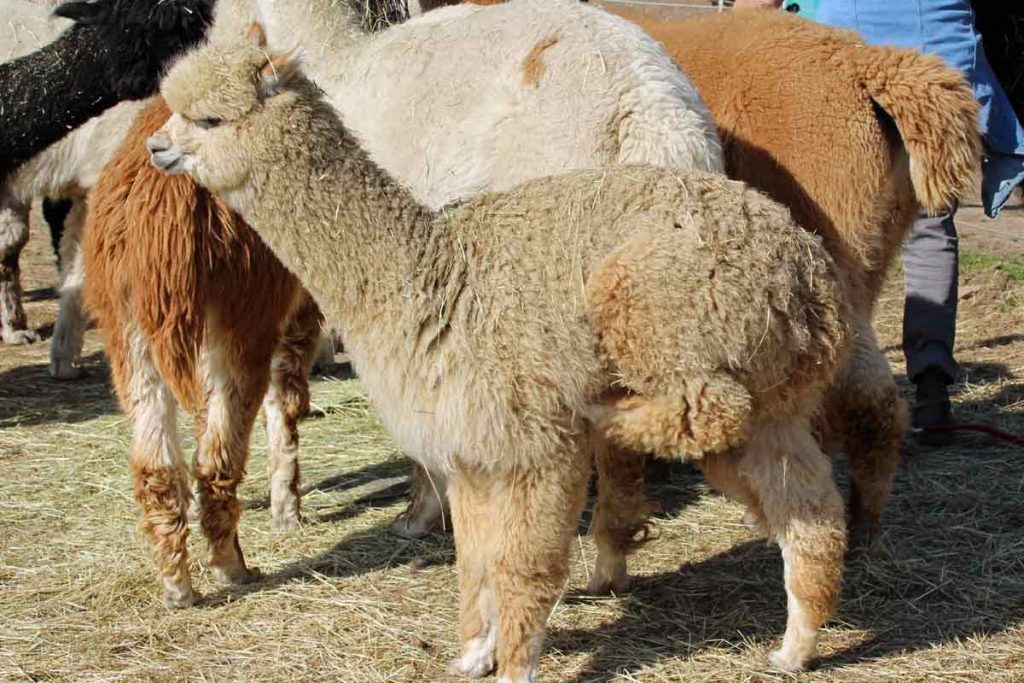
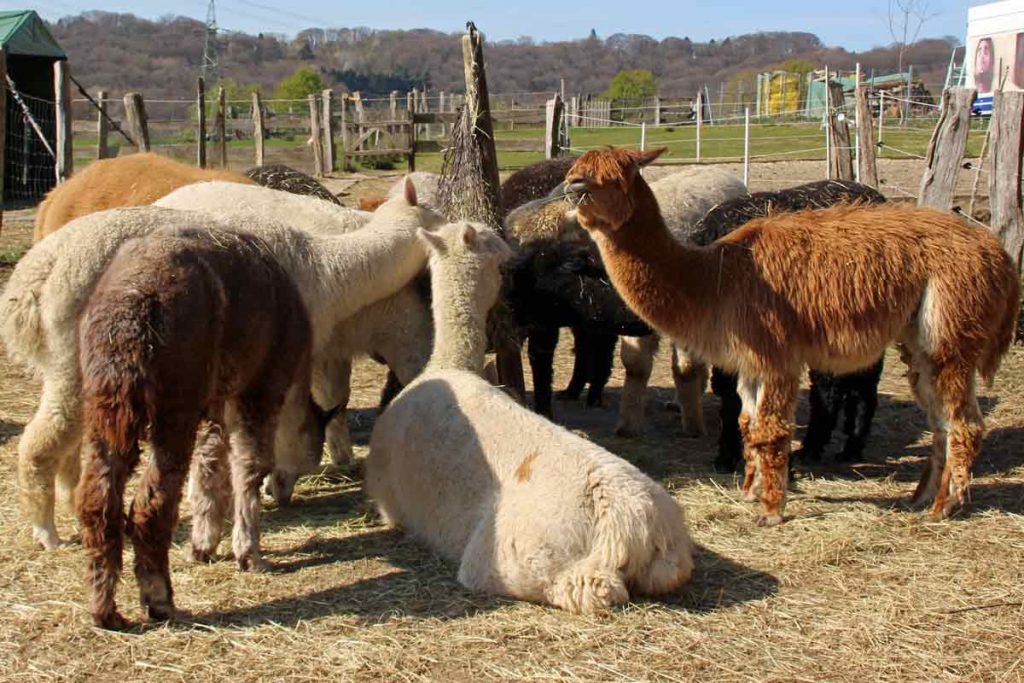
Alpakarma – Alpaca hiking in the Bergisches Land region
For our alpaca hike we chose the Alpakarma farm in Solingen. Currently, the herd consists of 23 animals which are seven broodmares, three stallions, six young animals and some geldings. The geldings are the ones which are taken on hikes. Additionally, there are also two lamas Urmel and Arthur.
On site at the alpaca farm
At the beginning of the hike, we look around the meadow getting to know the animals. Even if they come close to the fence, they won’t let us pet them. Like already mentioned, they are shy. But we love to watch them in their natural surrounding as part of their herd. We already hear their funny humming noises, which sounds like an approving “mmh”.
After we all decided on an alpaca, the owner Annette is catching the animals for us which just about works due to all her practice. We decided on Silvester, Crimson, Santana and Valentio, which is a colorful selection for our alpaca hike.
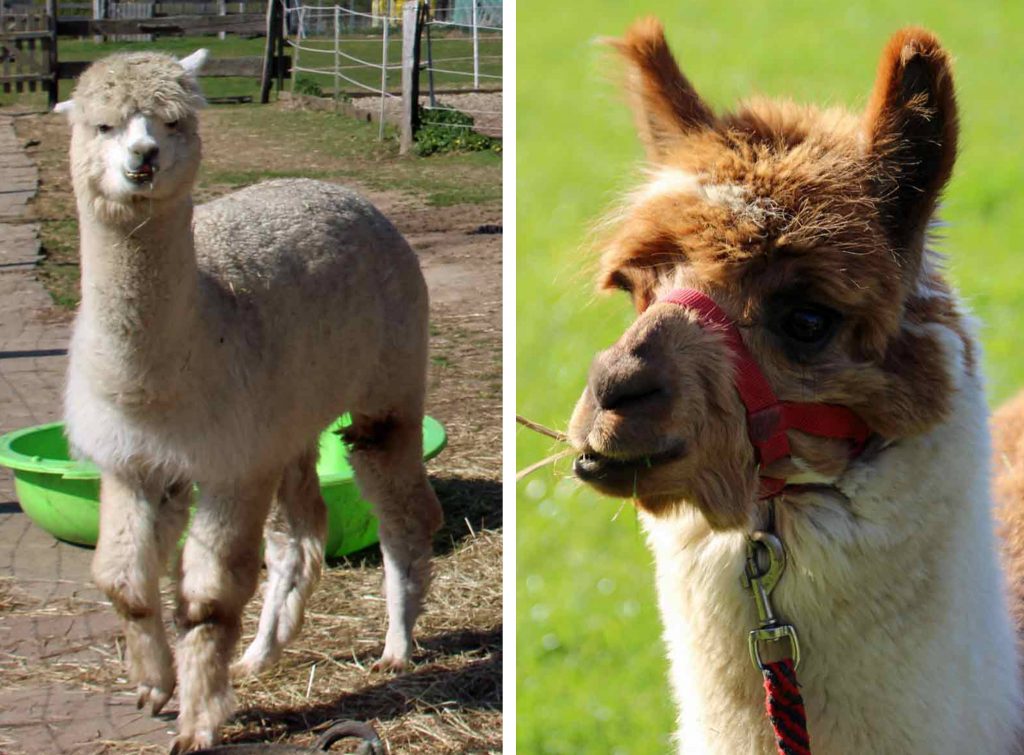
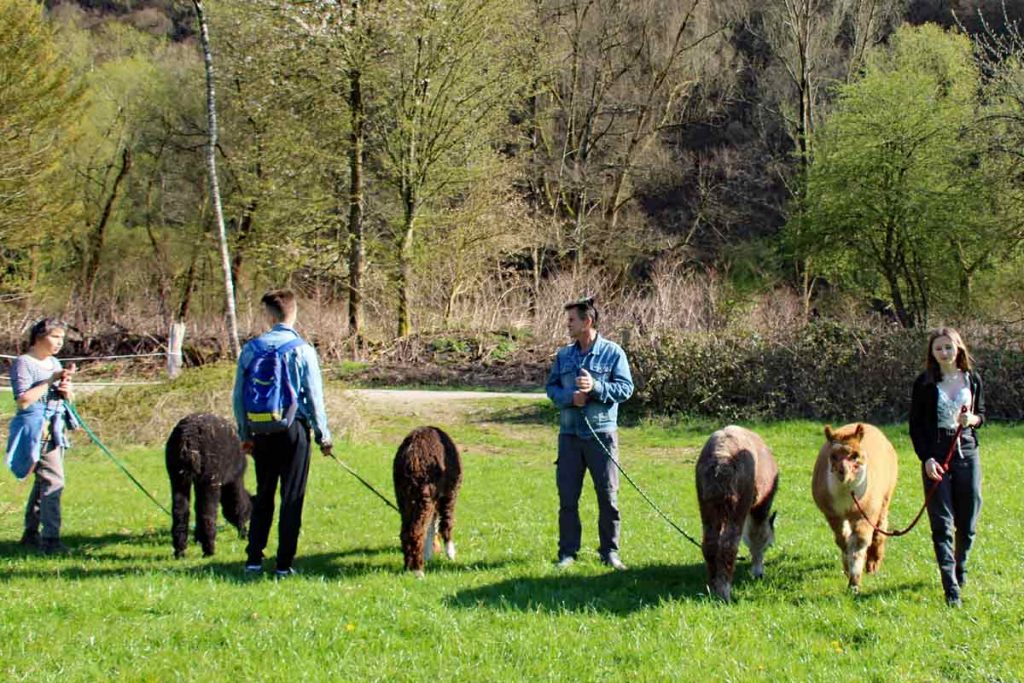
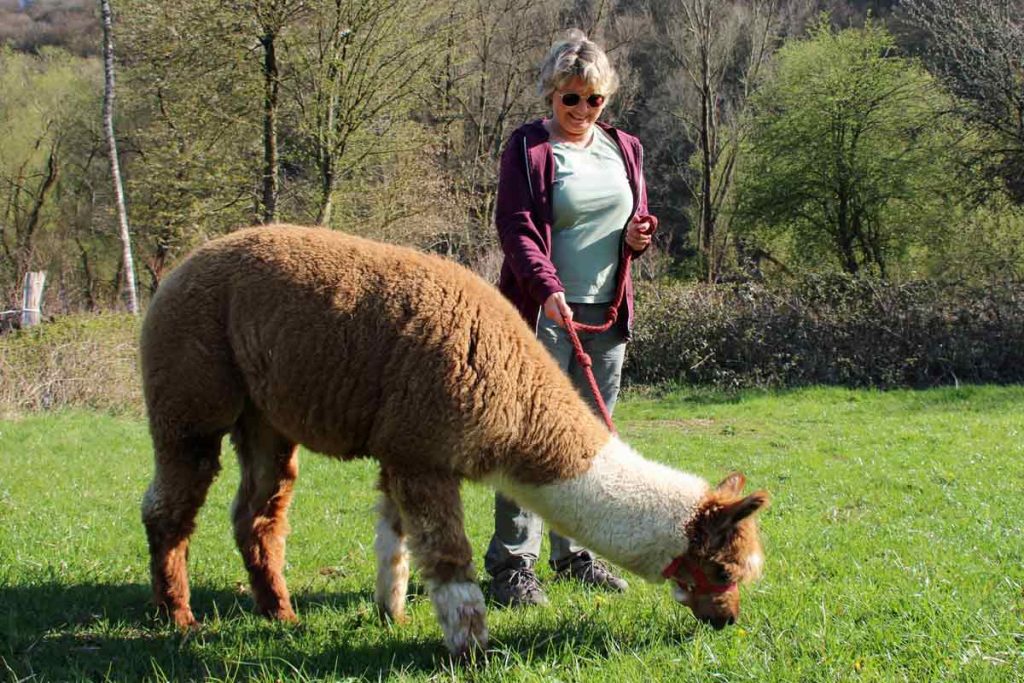
The alpaca hike
With the animal on a leash, we start our hike. We follow a hiking path directly behind the farm that leads through meadows and fields into a thinly wooded forest where it leads over rough and smooth. At the beginning, the alpacas have to agree on their hierarchy while walking, which leads to small but harmless fights. As soon as the leader is decided, the others arrange themselves calmly and walk peacefully behind him. During our hike, Santana was the leader. The alpacas find their way surefooted through the steep and rocky forest paths. Finally, we arrive at the valley and follow the stream of the Wupper river on flat paths. Now and then, other hikers stop and are happy to see “our alpacas”.
After a while, we reach a juice meadow and the group can start grazing extensively. During this stop, Annette tells us a lot about the animals, their way of life, where she got her first alpacas and how she lost her heart to them. Her biggest wish is to travel to the Andes one day to experience the alpacas in their natural habitat.
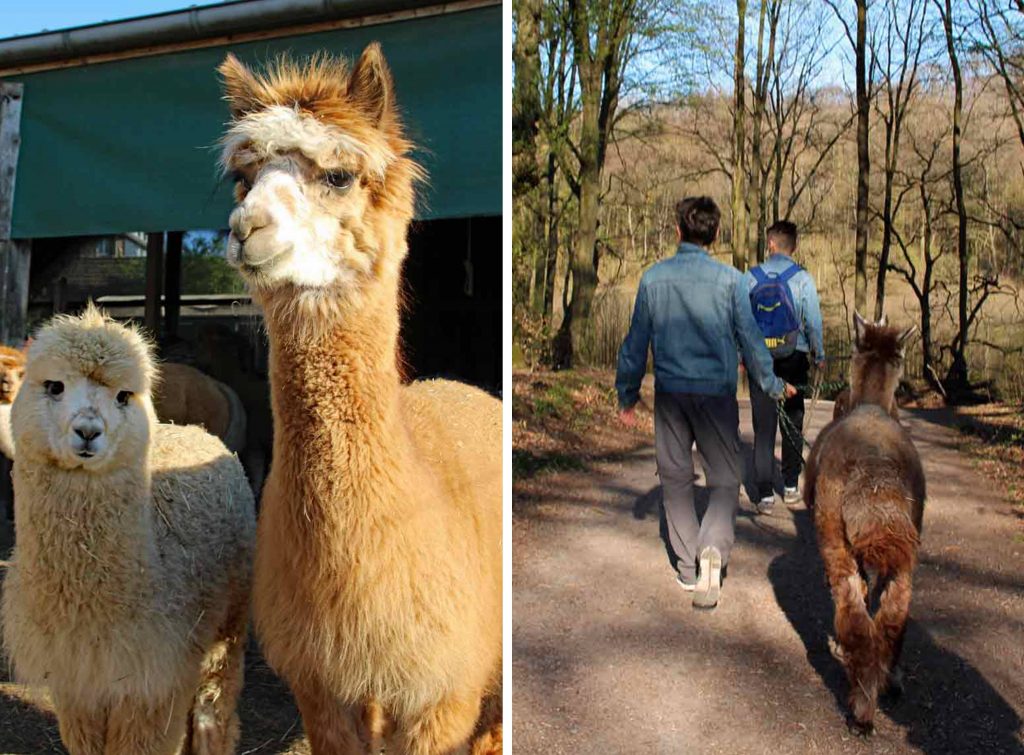
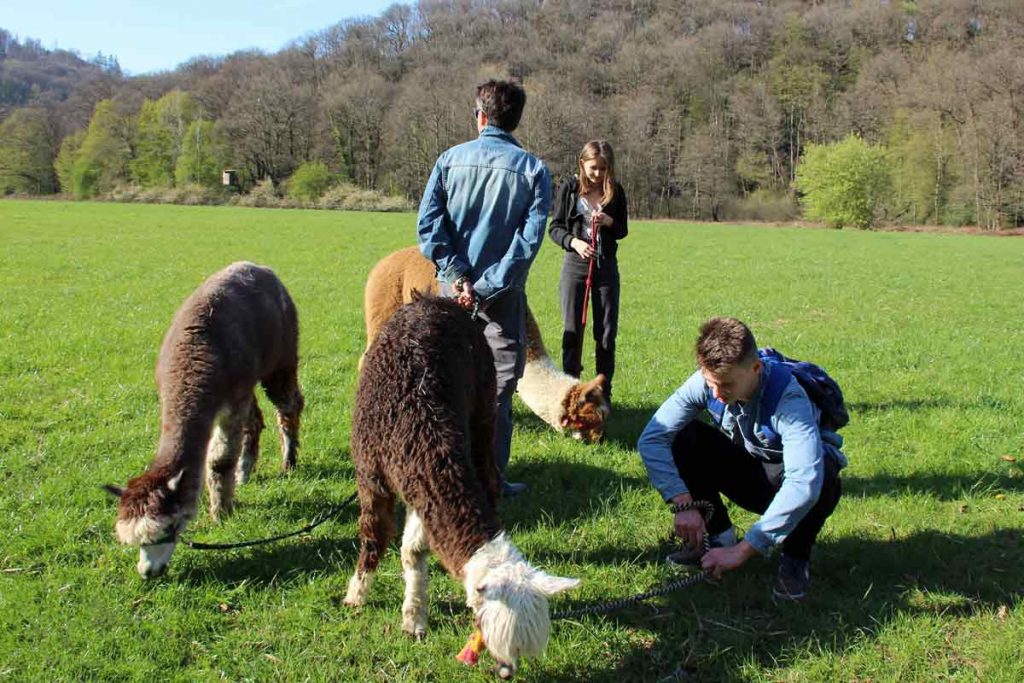
Afterwards, we hike a good distance further and again steeply uphill in the direction of the farm. The alpacas are not bothered by the uneven steep paths, totally in contrast to me. I really get out of breath during the fast increase. During the hike, there are plenty of beautiful views over the wide hills and valleys of the Bergisches Land. Everything is glowing in bright green color and the deep standing sun is coloring the landscape in a warm light.
After around two hours, we are back at the farm and we have to say goodbye to Crimson, Valentio, Santana and Silvester. By now, the four animals let us pet them, even if they are still afraid. But as soon as the halter is taken off of their head, they jump to their herd. Now, it’s time to say goodbye to „our alpacas“.
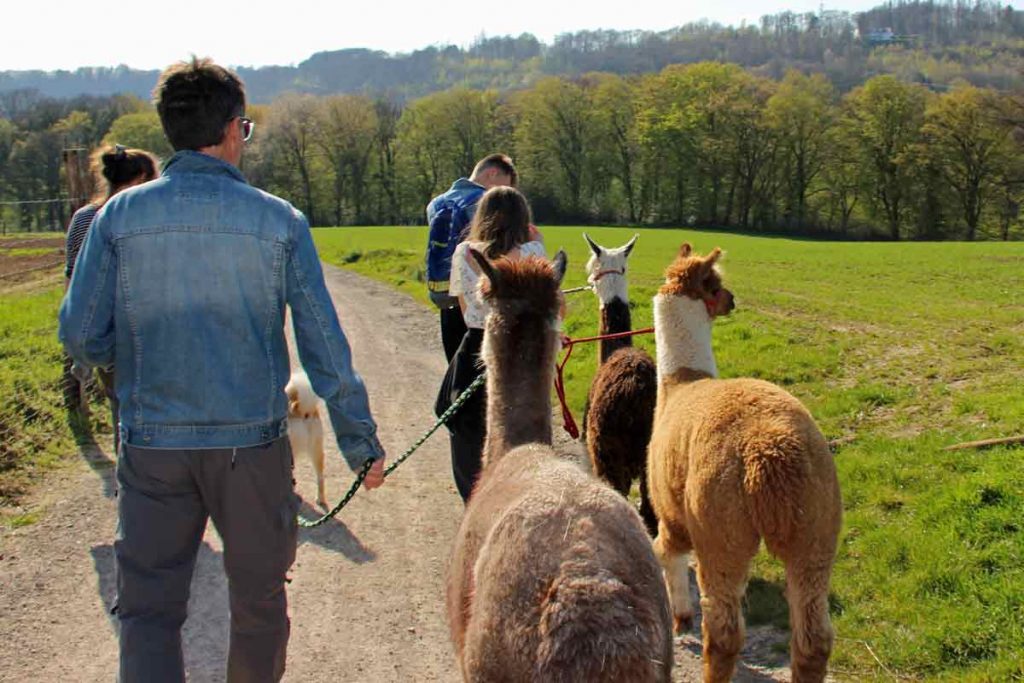
Summary: alpaca hiking
It was a beautiful and varied experience. It is especially suitable for families or groups of friends. The intense exchange with the animals and the beautiful nature around it helps you to forget about daily stress, problems and misery for a short while and to relax. Alpacas are also used for therapeutic purposes. It is the ideal undertaking for all ages, of course, if longer distances by foot can be mastered. For babies and people with reduced mobility, unfortunately the participation is not possible.
Article by Christiane Barthels.
Practical information
Alpakarma
Family Rabanus
bergischlandalpakas ( a t) live.de
+49 (0)212 / 2442 444
Homepage: www.bergischland-alpakas.de/
(unpaid advertising)
In the closer surrounding
Not far away, you can find the Balkhausener Kotten, the grinding museum of the so-called blade city Solingen. The old Schleifkotten is part of the Industrial Culture Route and lays directly at the Wupper with an old water mill wheel. There are also starting nice hikes from there along the Wupper. The restaurant Landhaus Ferres is really close to it in the small village Wupperhof. You can visit the place after the alpaca hike and eat delicious dishes in the beer garden next to the Wupper river.
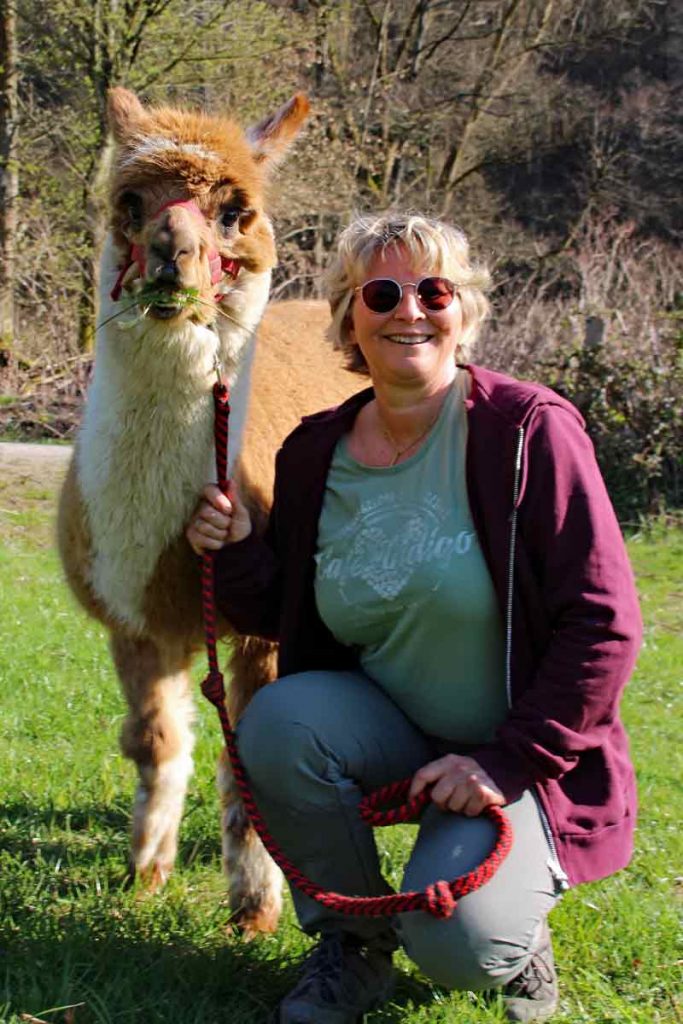
About the guest author
Christiane Barthels is from the Rheinland and has worked in tourism for over 35 years. Since April 2020, she has been sharing her collection of travel experiences and tips with interested readers.
Her blog der 2te Blick is a Slow Travel blog that is intended to guide the interest on the beauty of the second row. Here you can find travel tips for Slow Travel, Solo Travel and sustainable travel as well as travel reports from Europe, Asia and Africa.
Christiane tries to sensitize her readers that „less is sometimes more” and that thereby travel can become more sustainable, intense and pleasurable.
If you enjoyed reading this article, you might also like …
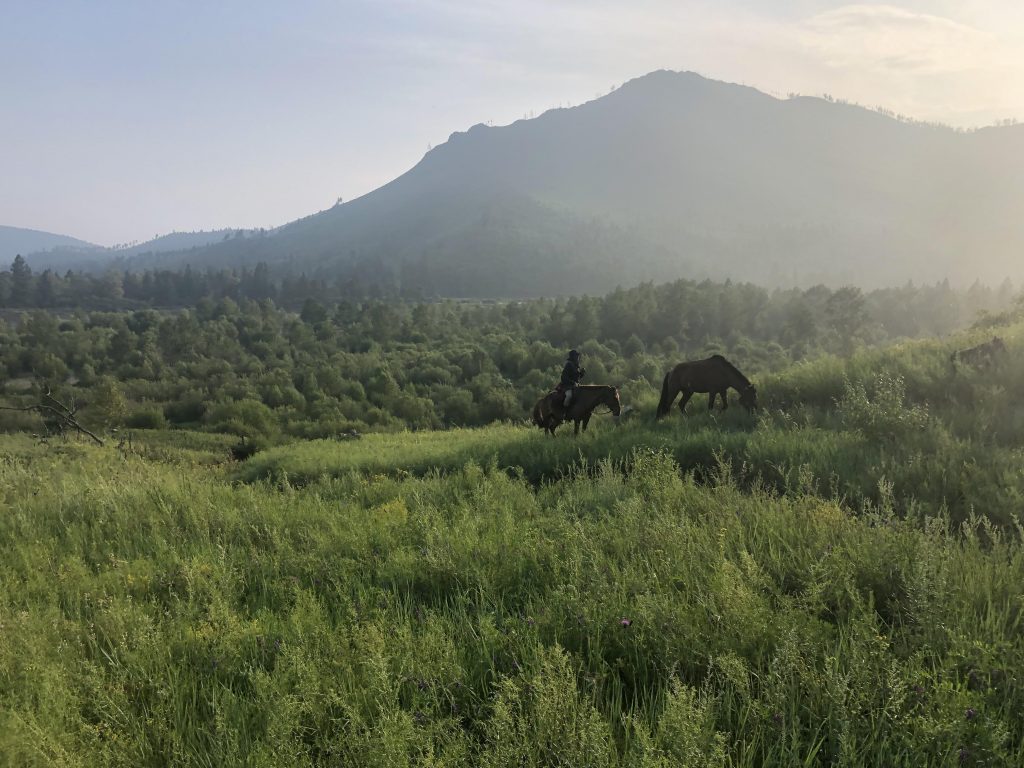
02 April 2021
Mongolia on Horseback
The landscape alone makes traveling to Mongolia worth it. The most authentic travel is to explore the country on horseback like the inhabitants themselves have for centuries. And this is precisely what a friend of mine from Kassel did for the incredible duration of two months.